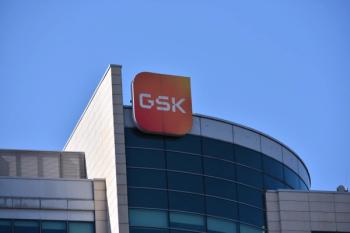
- BioPharm International-08-01-2007
- Volume 20
- Issue 8
Outsourcing: Managing Your Contractor Relationship—A Smart Investment
Companies need to avoid operating in a manner that is inconsistent with the priorities established in the strategic sourcing decision.
Life sciences companies outsource manufacturing for many reasons: to gain access to capacity and skills, while limiting their own capital requirements; to focus their resources; and to mitigate risk and uncertainty in their business. However, some companies are unrealistic about the degree to which they can outsource the management of their supply operations. A company must adequately prepare and staff to ensure that business objectives are met.
Todd Applebaum
WHY OUTSOURCE?
Some companies outsource the production of their active pharmaceutical ingredient (API) and keep later stages of the supply chain, such as packaging and distribution, in house. Others retain API or drug substance manufacturing, but partner for subsequent activities. Still others partner for multiple steps in the supply chain, or the entire supply chain. While the outsourcing configuration is specific to the characteristics and business objectives of each company, its operating model and technology, several common themes tend to underlie the "business case" for outsourcing.
For emerging companies, the primary motivation to outsource is limited capital to invest in facilities and equipment. Even for more mature companies, the magnitude of the required investment in biologics production and GMP processing is daunting, and many opt to invest in higher return activities.
Nate Ryan
Many smaller development-stage companies, which lack expertise in manufacturing and supply, prefer to focus their capital and resources on areas they view as true differentiators, such as discovery or marketing. By maintaining a strategic focus on these core activities, they can narrow their capital requirements.
When launching a new therapeutic, both small and large companies face technical uncertainties surrounding clinical results, process scale-up risks, regulations in the timing of potential approvals, and supply and demand trends. The outsourcing decision becomes a means of managing the risks. For larger companies looking to minimize the risk of high variable portions of their business, i.e., forecasts, partnering for additional capacity can smooth out production plans and help them gain efficiencies in their internal operations.
REAL DECISIONS, REAL COSTS
Deciding whether to outsource requires consideration of many variables and should follow a structured approach that evaluates a company's:
- existing skills and capabilities
- strategic objectives
- maturity of the technology or capability in question
- competitive environment
As Figure 1 illustrates, the assessment can be depicted in two major steps. First, management must consider whether the capability in question is strategic to the organization. This means developing an accurate understanding of the company's priorities and objectives, starting with a strategic assessment and evaluation of product and customer requirements. The outcome of the assessment helps to determine the goals and strategic direction of a potential outsourcing arrangement.
Figure 1
The second step is to analyze the near-term operational, financial, and competitive realities to justify the preferred direction or select another. Outcomes of the overall assessment include both near and long-term strategies that establish principles and priorities of that particular operational capability.
A company may decide to outsource an existing capability because it will no longer be strategic in the future, or to temporarily outsource to reduce internal risk during launch, but bringing those capabilities in-house later.
The cost of outsourcing is frequently understated. While contract manufacturing organizations often include a service or management fee in their outsourced price, this should not be confused with the customer's cost of managing the contractor. This includes costs for internal resources, management tools, and business process development required to operate effectively and efficiently. On the other hand, when the relationship is not managed effectively, cost takes the form of a poorly run outsourced manufacturing capability; where the costs may be measured in terms of yield, quality, or schedule, and can be much larger than the value of the required management resources. When a company's primary focus is on cost reduction, there is a tendency toward bids with limited support from the contractor. This is often exacerbated in smaller companies by the pressure to also cut internal support resources.
When resources for managing a contractor are not adequately planned for, supply chain management issues may manifest in a number of areas. There may be a lack of proactive management activities, including an absence of key performance indicators (KPIs) with which to monitor the contractor. A lack of KPIs typically results in poor understanding of how the contractor is performing at a strategic level, which leaves the company blind to rising issues. There could also be a lack of resources for handling issues as they arise with the contractor, in which case the problem takes an extended period to solve, or the day-to-day activities suffer, or both.
Quick Recap
CONSEQUENCES OF POOR MANAGEMENT
A lack of overall supply chain control not only contributes to an inefficient business model, but can inflict damage, in the form of stockouts, allocations, or quality control issues. Supply chain visibility is a key issue at many biopharmaceutical companies. Product cycle times for biologics are typically longer, and when they are distributed over several contract operations, it becomes difficult to see how much material exists at each stage and where it resides. The result is additional buffer stocks of inventory in the supply chain in order to compensate, and a large amount of effort spent tracking where materials are, determining when product will be delivered, and expediting shipments of product.
A lack of supply chain control is particularly meaningful during a product recall. A company may think it has adequate operational control over its supply chain and lot traceability, but with an extremely short deadline for ensuring that correct material is recalled from the market, timely or immediate access to the information is critical. If the locations and amounts of specific lots of product that must be recalled are not determined within the FDA's deadline, all of the product must be recalled. This has tremendous negative ramifications on the market's perception of the product.
One company, for example, suffered from a combination of both problems. While quality and compliance were monitored closely, the company was not measuring the performance of its supply chain contractor, and was unaware of product availability issues. As delivery of product began to be impacted, a flurry of activity out of the supply chain group ensued. It was unclear where the problem was. The situation worsened as less time was spent on activities like placing orders and checking order status throughout the supply chain. Additional resources from other areas of the company were deployed to support the supply chain group. Eventually the supply emergencies were addressed, but only on a case-by-case basis and without any actions that would help to prevent the issues from recurring in the future.
Appropriate resources and funding are required for proper supply chain management. Even emerging companies have adequate funding to manage contractor relationships, if it is planned for. Without the internal knowledge of what is required to run an outsourced supply chain, the budgets are often not set up correctly, and resource expectations are set at a reduced level. The budget cycle is usually an annual event taking into account next year's requirements. Sometimes it includes estimations as far out as five years, and these tend to set the precedent for the amount of resources allocated to supply chain management. Then once operations begin in earnest, the need for additional resources becomes apparent. It is understandable how this miscalculation can be made, since the supply chain is an external function and often not defined to the level that internal functions are. Unfortunately, the additional resource requirements may be identified outside of the budget process and therefore cannot be remedied until the next budget cycle which can be up to a year away.
For some companies, launching a new product is an even larger issue, as budget expectations were set in advance for the entire product launch. After the requirements are understood and defined it can be difficult to revisit and redefine the level of resources required to manage an outsourced model. Some companies have a set amount of funds allocated to a product. so in order to increase the resources allocated to managing the outsourced model, another area will need to decrease their resources.
MANAGE THE RISK
Life sciences companies often place a much higher value on mitigating risk than on avoiding cost. With many products offering dramatic and even life-saving treatment, patient impact in terms of either poor product quality or inability to supply the market has a much larger consequence than most cost saving activities.
Companies need to avoid operating in a manner inconsistent with the priorities established in the strategic sourcing decision. If the objective is to manage cost through outsourcing, the organization should allocate enough resources to be able to effectively track and manage the costs generated by outsourcing. On the other hand, if the objective is trying to manage risk of execution by outsourcing, resources should be planned and allocated to help ensure that the risk is mitigated.
MANAGING EFFECTIVELY
Early recognition of management requirements and proper investment in supply capabilities are needed to prevent problems with supply chain management. If a company is producing its first commercial product, it should assign the necessary experts and supply chain managers early in the process. For example, a strategic sourcing manager should be in place before major sourcing decisions are made. And an experienced CMO manager should be appointed before selecting the commercial CMO(s), negotiating contracts for commercial production, and possibly even before beginning clinical trial production.
For larger companies, transitioning operations outside of the organization does not mean that all of the manufacturing jobs should disappear. A number of individuals should remain as technical experts and as relationship managers. It is often helpful to think of managing your partner in terms of key performance indicators, and to ensure that the company retains the talent required to assess the outsourced company on these metrics. As the outsourcing model will be specific to each company and product situation, the level of management required will vary as well, and a careful examination of situational factors will be necessary. For instance, the management level for a long manufacturing lead time, expensive, unstable API will be much greater than it will be for a common, readily available API, even though both may be produced with the same outsourced partner, or by using a similar supply chain model. For example, the first API may require process specialists that can work through quality issues, such as causes and solutions; the second API may require only a business resource that monitors supplier performance on a quarterly basis.
Experience in what it takes to manage an outsourced manufacturing capability is important for establishing the resource level, tools, and business processes that will be required. Based on this experience, an understanding of how the outsourced model operates day-to-day is important.
- Will there be a frequent need to manage the supply chain schedule?
- Is there a complex relationship between the capacities of the different stages of the supply chain?
- How will the different pieces of the supply chain relate to each other?
- Where is the most risk to the product within the supply chain?
After answering these types of questions, one can start to develop a plan for when and which resources should be hired, as well as defining the appropriate business processes and required tools, such as planning or purchasing software.
For example, after manufacturing internally for some time, a company's facilities are nearing capacity. As new products move through development, the company is considering outsourcing the manufacture of its existing commercial product to make room for the internal manufacturing of a the pipeline drug. In this way, it is making a deliberate decision to focus its resources on managing the highly uncertain scale-up and launch of its products, and working out the manufacturing issues. It will be able to make a clean technical transfer to its outsourced manufacturing partner, and then be able to keep its next drug close by. This is attractive for this particular company, since it already has the technical expertise in-house for working through manufacturing development issues.
ADDITIONAL TOOLS
In addition to the human resources, supply chain managers of third-party outsourced operations require the appropriate IT and business process infrastructure in order to perform management activities. These IT tools include supply chain visibility, inventory tracking and analysis, production planning, capacity planning capabilities, to mention a few. Even "virtual" companies need to have these tools, despite not having manufacturing capabilities in house. The selected supply chain partners need direction from a central location that has a comprehensive view of what is taking place in the supply chain. Plans are constantly changing within the supply chain; lots fail, schedules and forecasts change, and without the appropriate tools, it is difficult to manage changing priorities.
Often an enterprise resource planning (ERP) system can serve as the transactional backbone for providing many of these capabilities. Standard purchasing modules can help to track what is on order and when it is expected. Planning modules usually track what is being manufactured and when, and the inventory module will track how much product is out there and at what stage of production. The list continues with different areas linking and enabling others. Lot traceability is another capability often provided in an ERP system that will be used as the system of record.
Smaller companies without an ERP infrastructure often use a combination of manual and paper-based processes, with rudimentary custom databases and in-house applications. However, as the company grows, these custom applications will likely not scale and will require replacing. While solutions exist that can provide distributed supply chain visibility without the burden of a full ERP application, it is important to constantly assess the information technology requirements.
Regardless of company size, structuring and managing effective supply chain business processes across companies is critical. There is often a lack of process and role definition in contractor relationships. Are the supply chain partners monitored on a regular basis? Are these results reviewed with the partner on a regular basis? What does the order process look like? What does the invoicing and payment process consist of? How often is the forecast or plan reviewed? These are just a few questions that may help to define some of the business processes required for managing an outsourced supply chain partner. Once these types of processes are established, refining them may also have a positive impact on the business.
CONCLUSION
No matter what stage of its lifecycle a company is in, outsourcing operations may be a viable means of preserving capital, focusing resources, and managing business risks. The outsourcing model is highly dependent on the company's unique business objectives and situation, and drives relationship management needs that are often ignored. Adequate human resources, information technology, and business process infrastructure should be established with regard to supply chain management, to ensure that the move toward outsourcing is successful. It is an investment that will pay off handsomely.
Todd Applebaum is vice president and operations/strategy practice leader at Maxiom Group, 781.250.4900,
Articles in this issue
over 18 years ago
From the Editor: After Zhengover 18 years ago
Process Development: Think Like a Scientist—Behave Like a Businessover 18 years ago
Street Talk: Small-Cap Biopharmaceutical Stocksover 18 years ago
Biotech Manufacturers Face Competition from "Similar" Follow-Onsover 18 years ago
Drug Delivery: What The Future Holdsover 18 years ago
Final Word: The Case for Flexible Manufacturing Capacityover 18 years ago
China Today: Biopharmaceutical Exportsover 18 years ago
Patents: Patent Strategies for Biotechnology EnterprisesNewsletter
Stay at the forefront of biopharmaceutical innovation—subscribe to BioPharm International for expert insights on drug development, manufacturing, compliance, and more.





